I first read about how to use lighting with double exposures in Joe McNally's excellent book, The Hot Shoe Diaries, and had been wanting to try something out ever since. Unfortunately, my D40X doesn't have the function -- only models D90 and above have it.
Fortunately, Joan has a D90, and one day in August, we decided to just try the function. Here's a test shot.
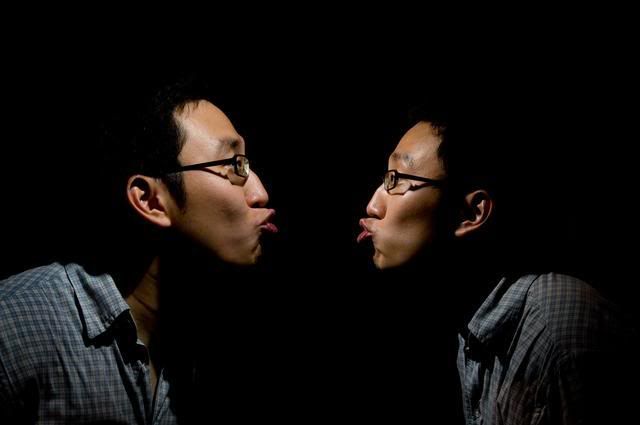
Ok don't puke, it was just for fun. © Lin Zhaowei, 2009.
So a couple of weeks ago, when Joan had some good friends over for a sushi dinner, we thought it might be fun to try it out with everyone. Here are a couple of the pictures we managed to take, using just one SB800 as lighting.
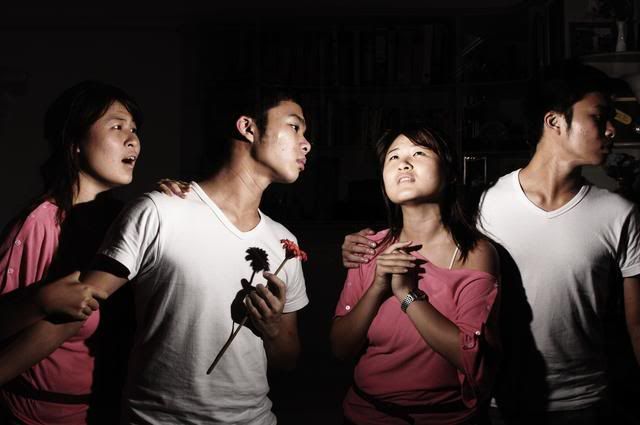
Love rectangle. © Lin Zhaowei, 2009.
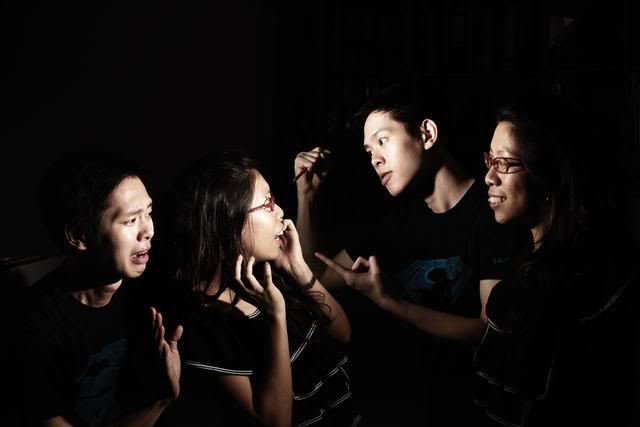
Give me the money... © Lin Zhaowei, 2009.
When Joan's friend Daniel suggested doing a "family portrait", I realised my folly of not bringing my SB900. But well, we always do our best and the end result wasn't too bad! But I had to cheat here -- as I wasn't behind the camera, it wasn't possible to do a double exposure and prevent any overlapping. So two exposures were taken and layered in GIMP. (I can't afford Photoshop)
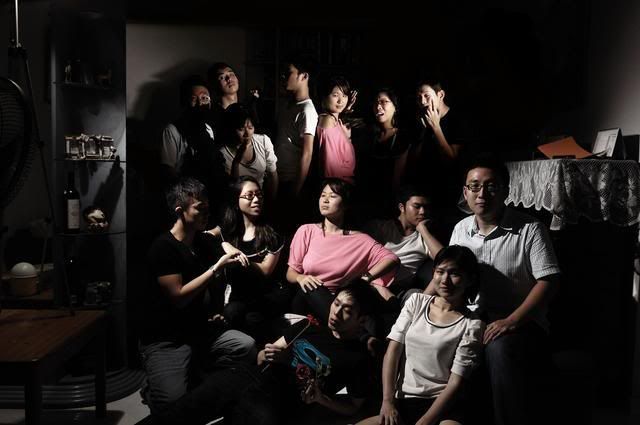
We had 12 guests and two hosts at the party. © Lin Zhaowei, 2009.
Anyway I think GIMP is quite feature-packed, though it would take quite a bit of getting used to for the Photoshop user. Took me a while to figure out how to do masking, which was needed to black out some parts of the picture. But it works and it's free, and I'm really quite impressed. Just wondering why they don't have a "hand" function like PS tho... It's not that comfortable moving around the image using the scroll wheel...
Note: There is however, a very useful Image Overlay function in the D40X, which is found in all recent Nikon consumer DSLR models. It is a sort of built-in HDR function that lets you put two images over each other. It is how, for example, I created this following image a few weeks ago, when I was in Beijing:
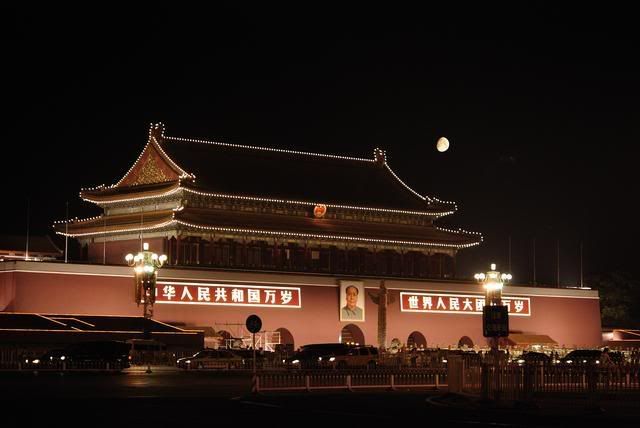
Tiananmen at night. © Lin Zhaowei, 2009.
Those of you who have taken pictures of a scene with a moon will know that the moon is very bright -- on a camera sensor, at least -- so when you expose such a scene, the moon will always be blown out. Hence the workaround, and it works fabulously for me!
Fortunately, Joan has a D90, and one day in August, we decided to just try the function. Here's a test shot.

Ok don't puke, it was just for fun. © Lin Zhaowei, 2009.
So a couple of weeks ago, when Joan had some good friends over for a sushi dinner, we thought it might be fun to try it out with everyone. Here are a couple of the pictures we managed to take, using just one SB800 as lighting.

Love rectangle. © Lin Zhaowei, 2009.

Give me the money... © Lin Zhaowei, 2009.
When Joan's friend Daniel suggested doing a "family portrait", I realised my folly of not bringing my SB900. But well, we always do our best and the end result wasn't too bad! But I had to cheat here -- as I wasn't behind the camera, it wasn't possible to do a double exposure and prevent any overlapping. So two exposures were taken and layered in GIMP. (I can't afford Photoshop)

We had 12 guests and two hosts at the party. © Lin Zhaowei, 2009.
Anyway I think GIMP is quite feature-packed, though it would take quite a bit of getting used to for the Photoshop user. Took me a while to figure out how to do masking, which was needed to black out some parts of the picture. But it works and it's free, and I'm really quite impressed. Just wondering why they don't have a "hand" function like PS tho... It's not that comfortable moving around the image using the scroll wheel...
******************************
Note: There is however, a very useful Image Overlay function in the D40X, which is found in all recent Nikon consumer DSLR models. It is a sort of built-in HDR function that lets you put two images over each other. It is how, for example, I created this following image a few weeks ago, when I was in Beijing:

Tiananmen at night. © Lin Zhaowei, 2009.
Those of you who have taken pictures of a scene with a moon will know that the moon is very bright -- on a camera sensor, at least -- so when you expose such a scene, the moon will always be blown out. Hence the workaround, and it works fabulously for me!
No comments:
Post a Comment